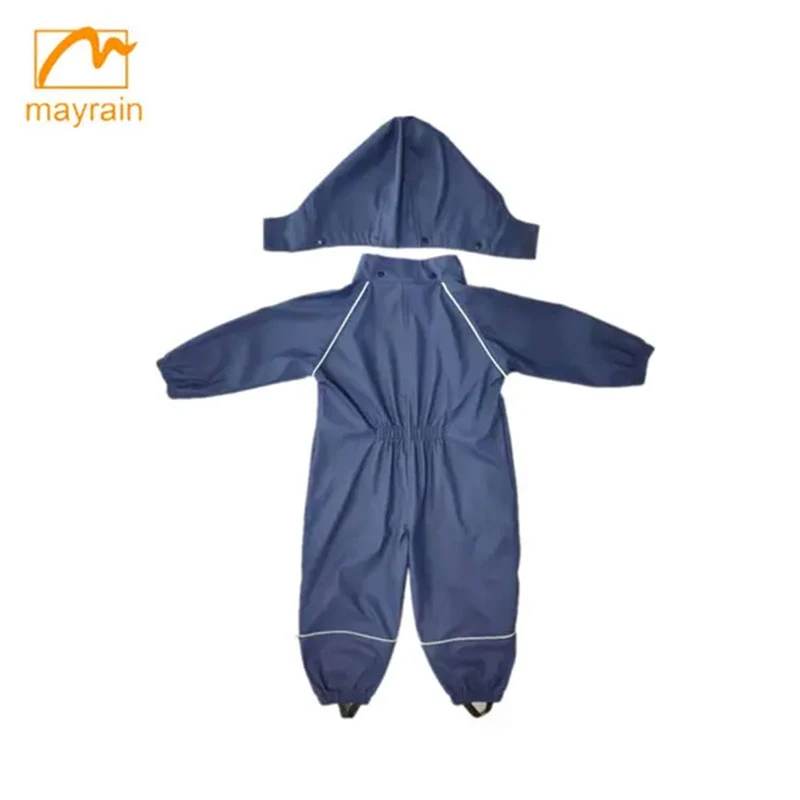 rainwears@163.com may@may-rain.com
rainwears@163.com may@may-rain.com Mon to Friday: 8.00 am - 7.00 pm
Mon to Friday: 8.00 am - 7.00 pm
Exploring Opportunities in the Men's Raincoat Market for Business Growth and Innovation
The Emergence and Growth of the Men's Raincoat Business
In recent years, the men's raincoat business has witnessed a remarkable transformation. With changing fashion trends, increased awareness of climate change, and a growing emphasis on sustainability, the market for men's raincoats has expanded significantly. This article delves into the factors driving this growth, the modern design innovations transforming traditional raincoats, and the future of the men's raincoat industry.
Evolving Consumer Needs and Trends
One of the primary drivers of growth in the men's raincoat business is the changing perception of raincoats as merely functional garments. Historically, raincoats were designed solely for protection against the elements, often sacrificing style for utility. However, today's consumers are looking for rainwear that not only keeps them dry but also aligns with their personal style. This shift has led to an increase in demand for fashionable, high-quality raincoats that can be worn in various settings—from casual outings to formal events.
Furthermore, the rise of athleisure has influenced the raincoat market. Men seeking versatility in their wardrobes want pieces that can easily transition from work to play without compromising on functionality. Brands are now offering a range of designs that incorporate sporty elements, making raincoats more appealing to a younger audience.
Innovation in Materials and Design
As the men's raincoat industry evolves, so too do the materials and technologies used in production. The development of advanced waterproof fabrics has revolutionized the market. Gone are the days of heavy, plastic-like raincoats. Modern designs utilize breathable, lightweight materials that provide waterproof protection while ensuring comfort. Innovations such as Gore-Tex and other moisture-wicking fabrics are becoming commonplace, allowing wearers to remain dry without overheating.
Moreover, many brands are now focusing on eco-friendly materials in response to the growing demand for sustainable fashion. Consumers are becoming more conscious of their environmental impact, prompting companies to explore recycled fabrics and sustainable production processes. This commitment to sustainability is reshaping the way brands market their raincoats, appealing to a demographic that values ethical consumption.
Market Dynamics and Competition
mens raincoat business

The men's raincoat market is characterized by a diverse array of brands, ranging from high-end fashion houses to affordable, mass-market retailers. This competitive landscape requires companies to differentiate themselves through unique selling propositions, whether through design, price, or sustainability efforts.
Direct-to-consumer (DTC) brands have emerged as formidable players in the raincoat business, leveraging digital marketing strategies to reach a broader audience. These brands often focus on niche markets, offering customized products and personalized shopping experiences that traditional retailers struggle to match. The rise of e-commerce has also facilitated easier access for consumers to a variety of raincoat options, which has contributed to market growth.
The Future of the Men's Raincoat Business
Looking ahead, the growth potential for the men’s raincoat business remains promising. With unpredictable weather patterns becoming the norm, the necessity of high-quality rainwear will continue to drive demand. Increased urbanization also suggests that more men will seek practical, stylish raincoats suitable for city living.
In addition, collaborations between fashion influencers and brands are becoming a popular marketing strategy. By leveraging social media platforms, brands can engage directly with consumers and showcase their products in innovative ways. This approach not only boosts visibility but also fosters a sense of community around the brand.
Finally, the trend towards multifunctional clothing is likely to shape the future of men's raincoats. As consumers seek out versatile outerwear that can be worn year-round, brands may explore hybrid designs that incorporate elements of both raincoats and other outerwear styles.
Conclusion
The men's raincoat business is on an upward trajectory, fueled by changing consumer preferences, innovative materials, and a competitive market landscape. As sustainability becomes increasingly important and fashion evolves, it is clear that raincoats will no longer be seen as merely protective gear. Instead, they will emerge as essential fashion statements that blend style, comfort, and functionality. The future looks bright for the men’s raincoat business, signaling a new era where practicality meets elegance.
-
Silver Printed Women’s Jacket – Stylish, Lightweight & Trendy Outerwear
NewsJul.30,2025
-
Fashionable Design Long Raincoat Rain Poncho Waterproof Polyester
NewsJul.30,2025
-
High Lighting Reflective Rain Jacket Windbreaker Safety Jacket for Adult
NewsJul.29,2025
-
Disposable PE Rain Poncho - Lightweight, Waterproof, Easy to Carry
NewsJul.29,2025
-
Stylish Lady Coat Women Jacket – Trendy & Elegant Outerwear
NewsJul.29,2025
-
Full Printing 100% Waterproof Wearable Striped Polyester Fashion Windproof Raincoat
NewsJul.29,2025































